Browse through our far-from-complete history of disobedient role models through the ages.
- Login
- Register
Work for a Member company and need a Member Portal account? Register here with your company email address.
Disobedience in history
-
39-43 1/21
The Trung Sisters defy China
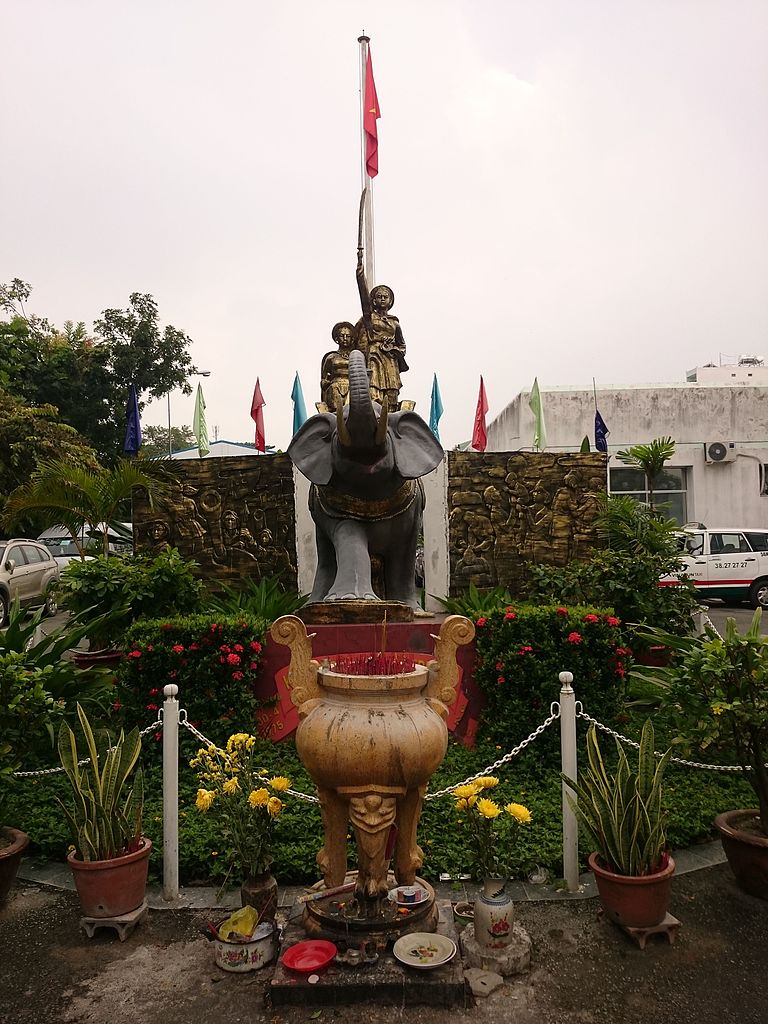
All the male heroes bowed their heads in submission; only the two sisters proudly stood up to avenge the country.” —C15 Vietnamese poem
In the year 39, Vietnamese sisters Trưng Trắc and Trưng Nhị organized an army of 8,000 to rebel against the rule of China’s Han Dynasty. Born into a military family, they personally trained 36 other women as generals in their army, which was largely female. Over the course of a year they took some 65 fortresses back from the Chinese. They liberated Vietnam, ruling the country as queens, and defeated all Chinese military actions for over two years, before finally being overcome by the vast Chinese army and committing suicide in a final act of defiance.
-
1517 2/21
Martin Luther sparks the Reformation
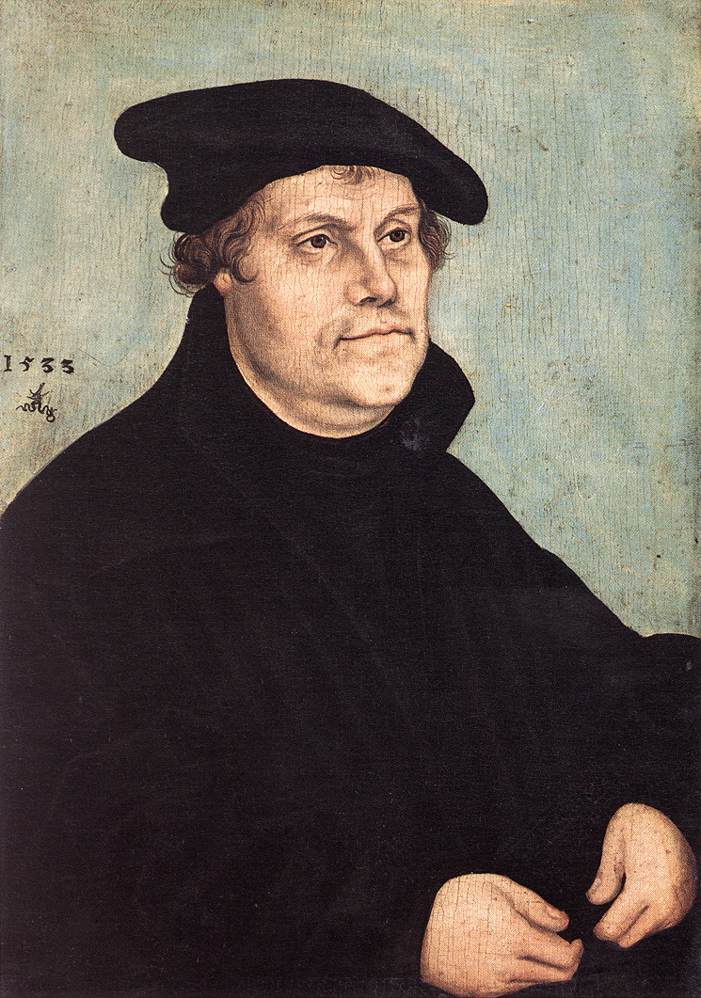
Here I stand. I cannot do otherwise. God help me. Amen.”
Disgusted by what he saw as lax and immoral practices within the Catholic church, Luther wrote the 95 Theses, a work intended to inspire debate within the Church, which he nailed to the door of the Castle Church in Wittenberg in 1517. He further challenged the Church’s authority to excommunicate, the primacy of the Church in Rome, and papal infallibility, which earned him a charge of heresy. He refused to recant and fled arrest.
-
1609-1642 3/21
Galileo Galilei defies the Church in the name of science
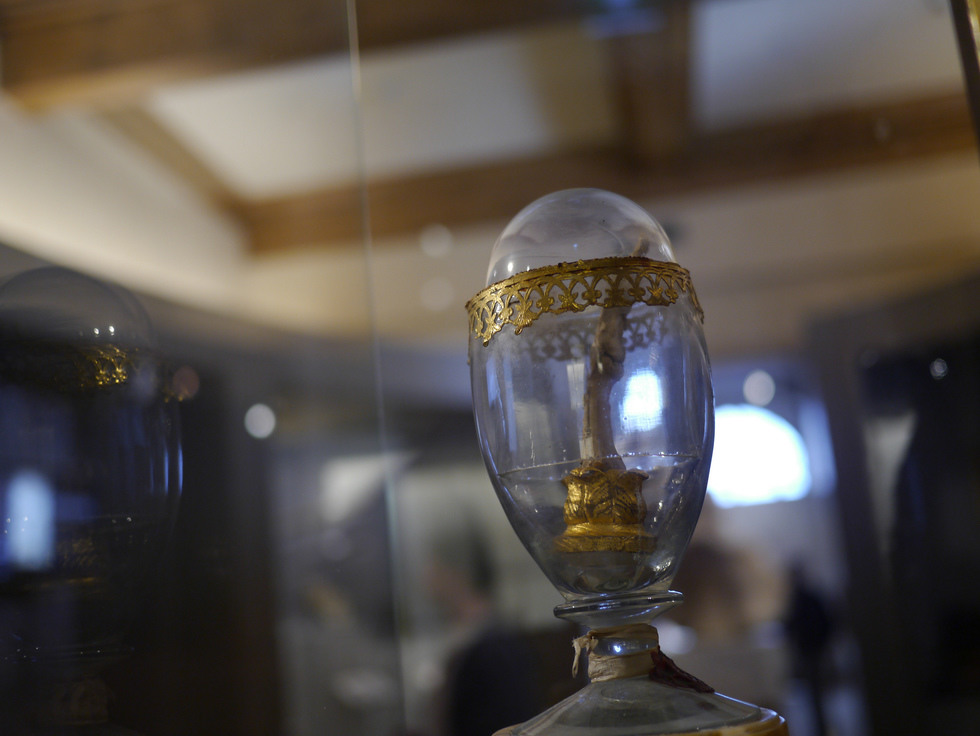
All truths are easy to understand once they are discovered; the point is to discover them.”
A scientist and mathematician, Galileo challenged the Aristotelian approach to physics. He invented a telescope in 1609 that could magnify objects 20x, compared with the 3x standard of the day. With it, he disproved the geocentric theory of the universe in favor of the Copernican system. In 1633, in direct defiance of a warning from the Pope, he published a book about his findings, and was consequently placed—for the remainder of his life—under house arrest by the Inquisition under a charge of heresy.
-
1773-1788 4/21
The Founding Fathers reinvent democracy
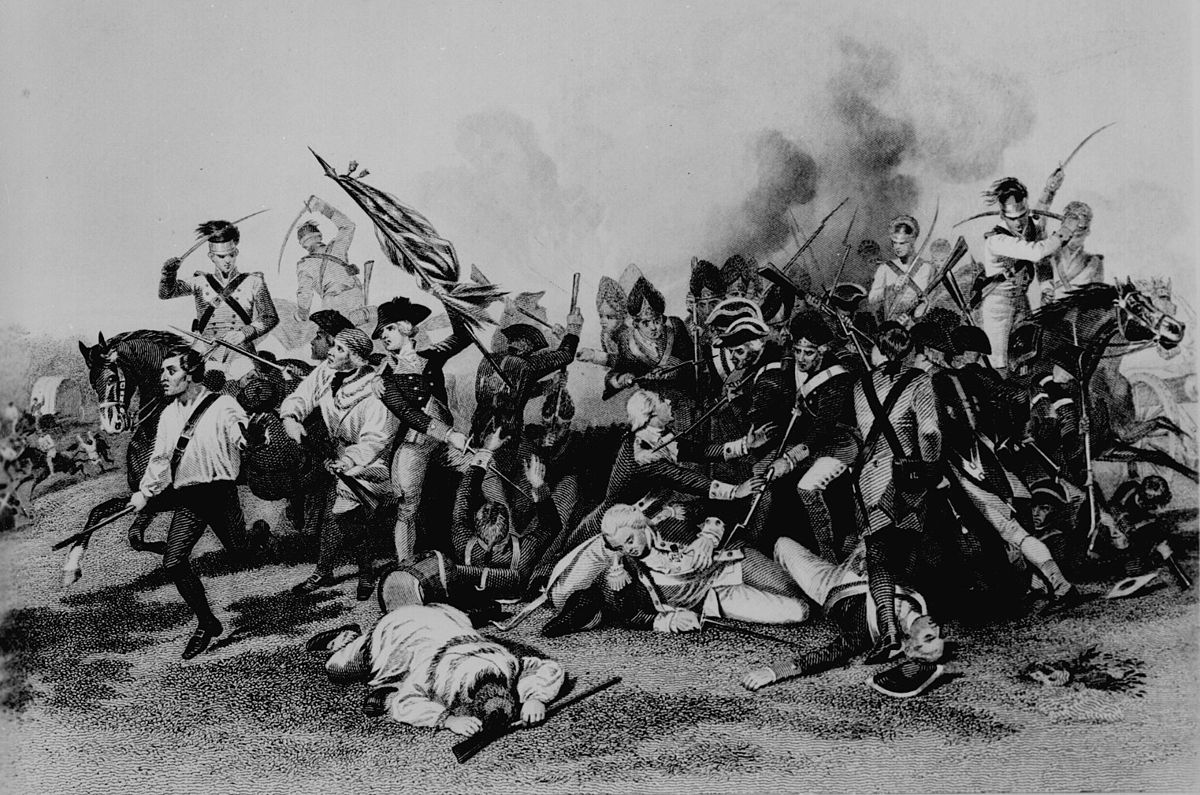
Liberty, according to my metaphysics is a self-determining power in an intellectual agent. It implies thought and choice and power.”
The key Founding Fathers included John Adams, Benjamin Franklin, Alexander Hamilton, John Jay, Thomas Jefferson, James Madison, and George Washington, but dozens of other men and women were vitally important to instigating, organizing, and carrying out the Revolution. From the Boston Tea Party in 1773 to the First Continental Congress, from the signing of the Declaration of Independence to the ratification of the US Constitution in 1788, the Founding Fathers engaged in acts of political, military, and philosophical disobedience to break from British rule and create an entirely new kind of government.
-
1860s 5/21
Harriet Tubman leads people to freedom
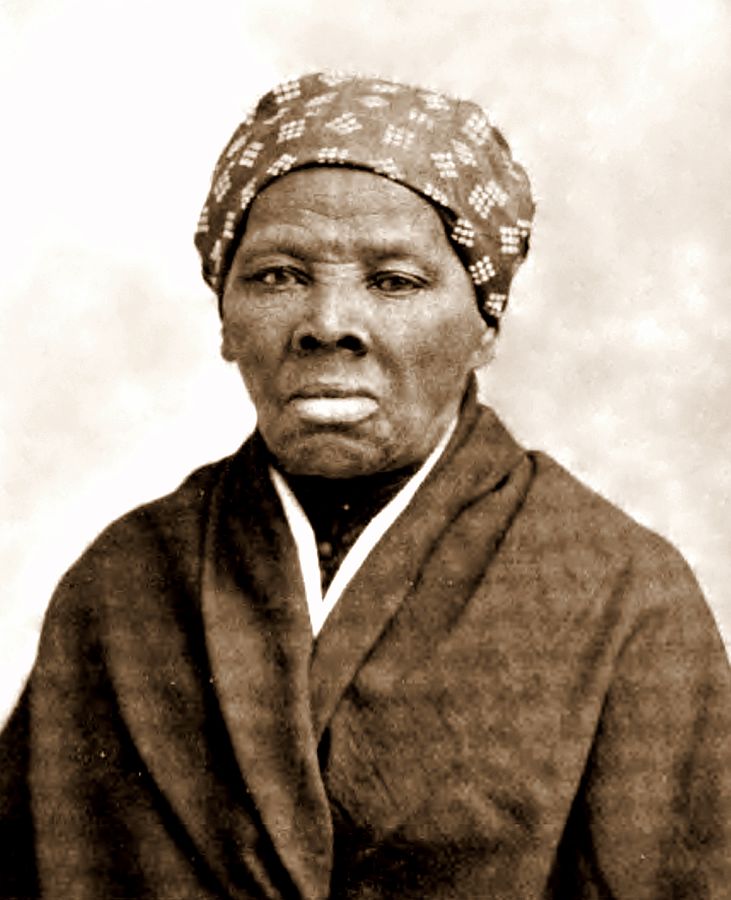
I was the conductor of the Underground Railroad for eight years, and I can say what most conductors can’t say—I never ran my train off the track and I never lost a passenger.”
Harriet Tubman escaped slavery in 1849, after which she became a conductor on the Underground Railroad. In 10 years she made 19 trips into slave-holding territory, guiding some 300 slaves to freedom. During the Civil War she was an armed scout and spy for the Union Army, and also led the Combahee River Raid, which freed 700 slaves. Despite these services it took 34 years for the army to agree to pay her pension.
-
1860s 6/21
Mary Edwards Walker wears a man’s uniform and does a surgeon’s job
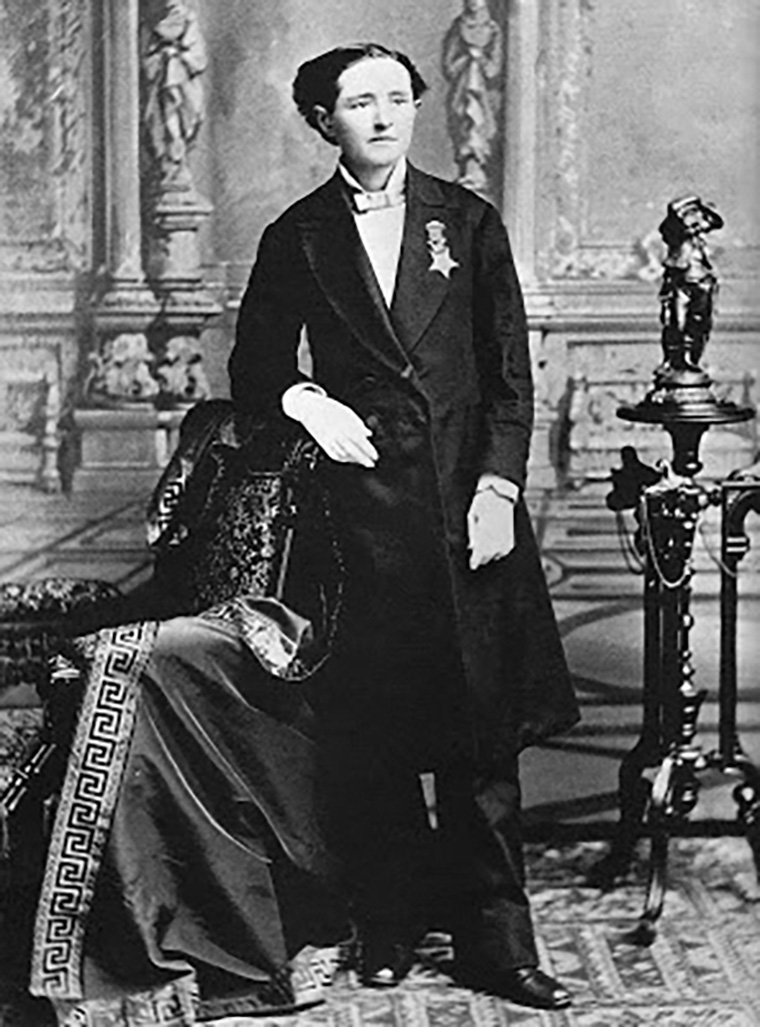
Let the generations know that women in uniform also guaranteed their freedom.”
Despite having a medical degree, Dr. Walker was only allowed to volunteer as a nurse during the Civil War. She was refused an official appointment and a uniform, so she made her own uniform. In 1863 she was finally appointed as an assistant surgeon in the army, the first-ever female surgeon. She was also arrested numerous times for dressing in men’s clothing. Dr. Walker was the first woman awarded the Congressional Medal of Honor; it was revoked two years before her death when they changed the rules, but she refused to return the medal. It was reinstated in 1977.
-
1868-1877 7/21
Sitting Bull refuses to sign his home away
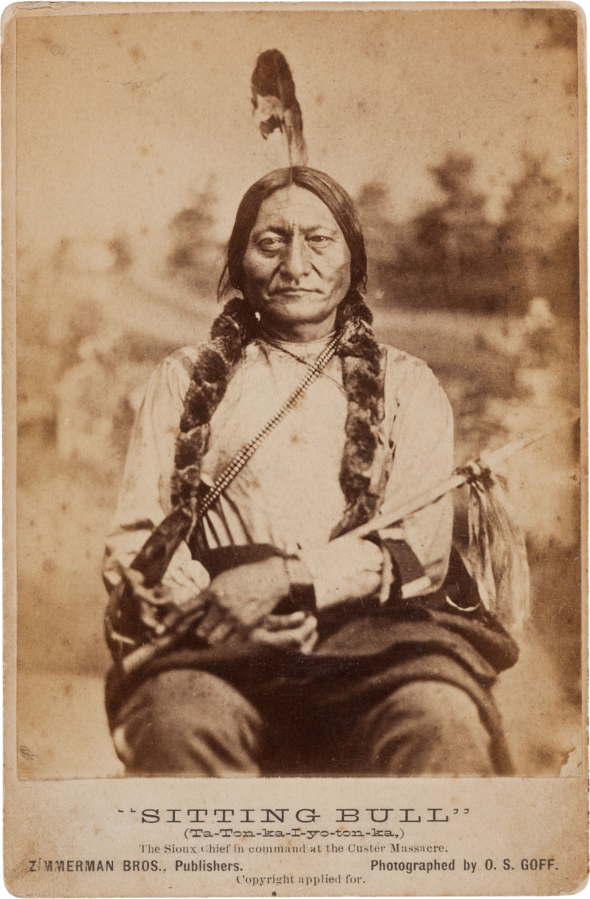
The warrior, for us, is one who sacrifices himself for the good of others.”
In 1868, Sitting Bull refused to sign the Fort Laramie Treaty, which relegated the Lakotas who signed it to live on a reservation. He and his followers lived in the Unceded Territory until 1876, when the US government deemed the territory closed and sent Colonel Custer to subdue them. Custer’s army was annihilated, and Sitting Bull and his followers stayed on their lands until 1877, when they emigrated to Canada.
-
1914-1948 8/21
Mahatma Gandhi devotes his life to nonviolent protest
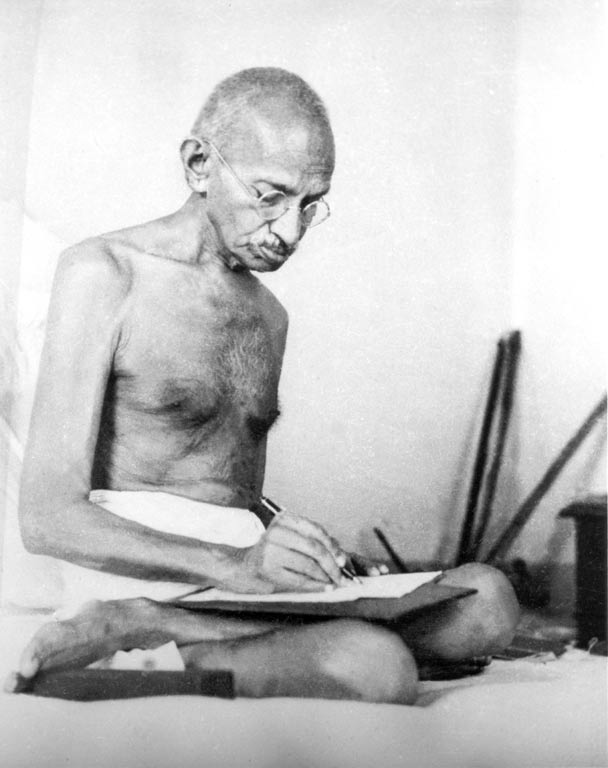
We shall either free India or die in the attempt; we shall not live to see the perpetuation of slavery.”
Mahatma Gandhi was the leader of the movement for Indian independence and a pioneer of nonviolent resistance. In 1914, he was imprisoned after leading a strike in South Africa against a tax on people of Indian descent; he led a march of 2,221 people from Natal into the Transvaal in an act of public disobedience. He was arrested and imprisoned repeatedly in India over decades of leading protests, marches, and other nonviolent demonstrations of resistance as leader of the independence movement. When violence and chaos erupted after the formation of India and Pakistan, Gandhi led efforts to bring peace, fasting and working to protect the Muslims who chose not to move to Pakistan. He was assassinated by a Hindu extremist in 1948.
-
1942-1943 9/21
The White Rose promotes resistance in Nazi Germany
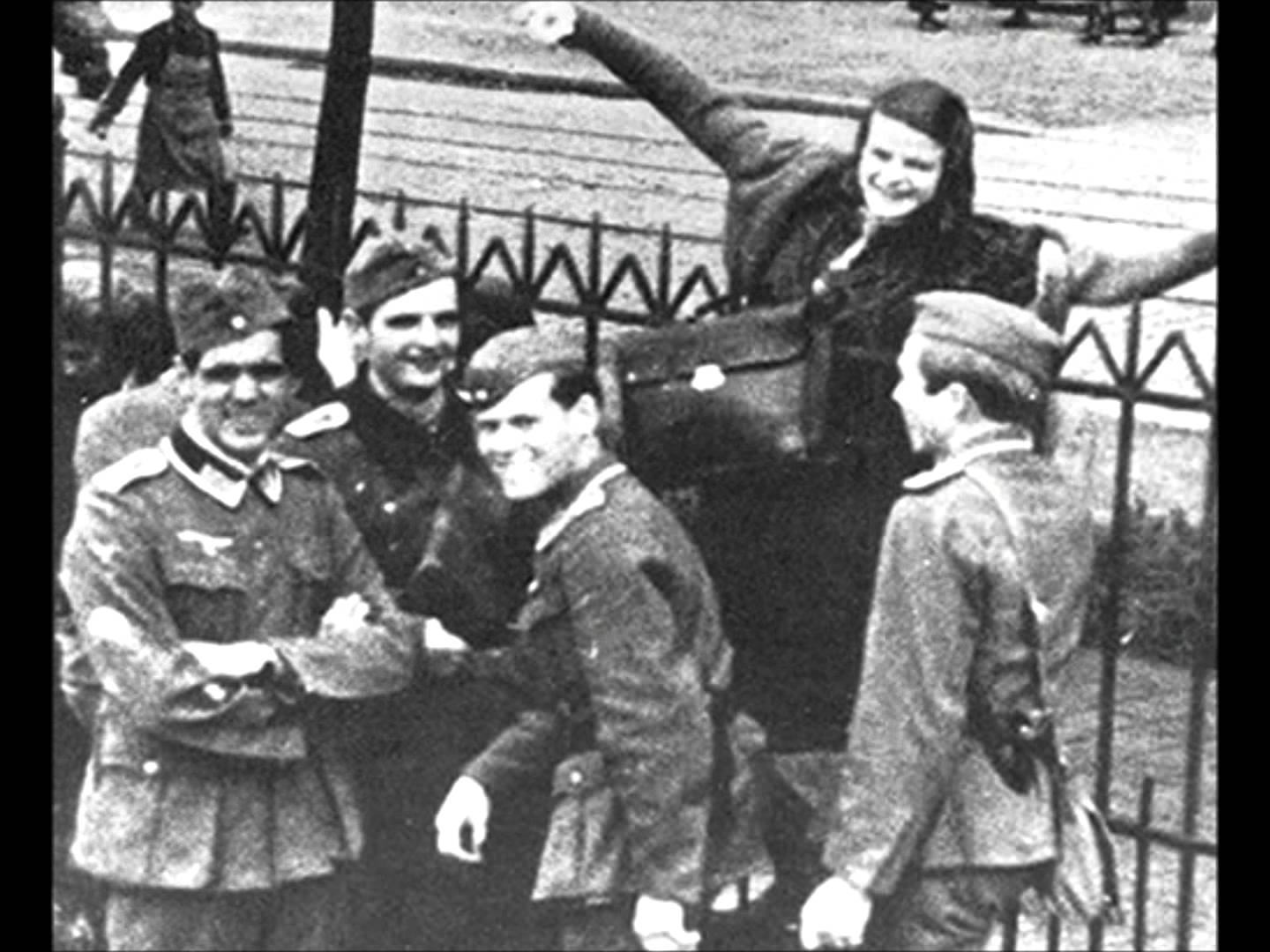
We will not be silent. We are your bad conscience. The White Rose will not leave you in peace!”
Led by Sophie and Hans Scholl, Alex Schmorell, Willi Graf, and Christoph Probst, among others, the White Rose formed at the University of Munich to oppose the Nazi regime. The group produced and distributed leaflets encouraging Germans to resist Nazi oppression, and wrote anti-Hitler slogans on buildings throughout Munich. In February 1943 they were discovered and arrested. The Scholls and Probst were convicted and executed on February 22, with Schmorell and Graf following later that year.
-
1954-1970s 10/21
The Civil Rights Movement
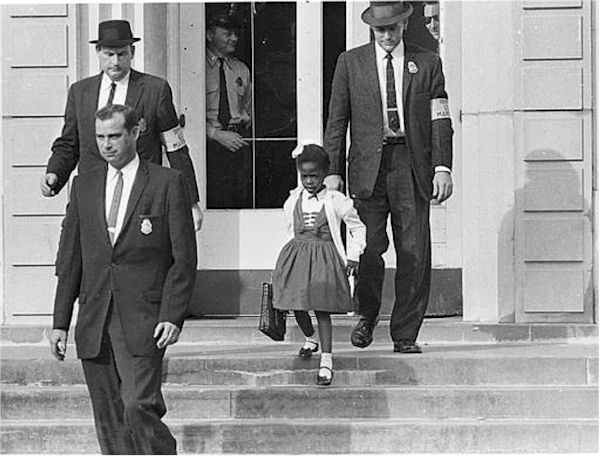
Anyone who said he wasn't afraid during the civil rights movement was either a liar or without imagination. I was scared all the time. My hands didn't shake but inside I was shaking.” —James L. Farmer, Jr.
In 1954 the Supreme Court outlawed segregation in schools in its landmark Brown vs Board of Education case. This watershed moment galvanized the efforts of dozens of groups and thousands of individuals across America to fight racism and achieve equality for black Americans. These many groups were not necessarily united by strategy, tactics, or even goals; the movement encompassed small acts of disobedience such as local sit-ins as well as massive coordinated efforts such as the Montgomery Bus Boycott (1955) and the March on Washington (1963). The movement is famous for its guiding (though not exclusive) principle of nonviolent resistance, and activists endured arrest, physical and sexual assault, humiliation, murder, and other acts of aggression from authority figures and organizations.
-
1955 11/21
Martin Luther King, Jr.
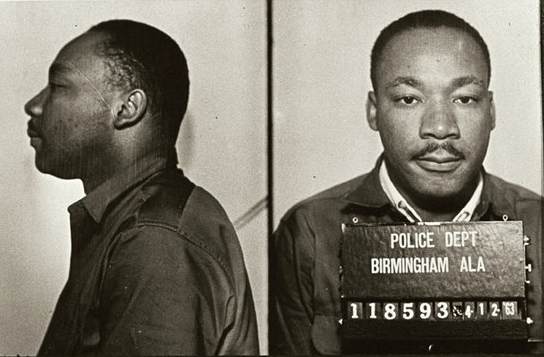
And there comes a time when we must take a position that is neither safe, nor politic, nor popular, but one must take it because it is right.”
Dr. King served as spokesman for the Montgomery Bus Boycott in 1955, and served as president of the Southern Christian Leadership Conference (SCLC) from 1958-1968. In 1963, he both led a coalition of numerous civil rights groups in a nonviolent campaign aimed at Birmingham, Alabama and helped organize and lead the March on Washington, where he gave his “I have a dream” speech. Dr. King was awarded the Nobel Peace Prize in 1964; that same year that Congress passed the Civil Rights Act and in 1965 the Voting Rights Act, largely as a result of the efforts led by Dr. King. He advocated for economic equality and international peace, including protesting the Vietnam War, and organized the Poor People’s Campaign, before his assassination in 1968.
-
1955 12/21
Rosa Parks
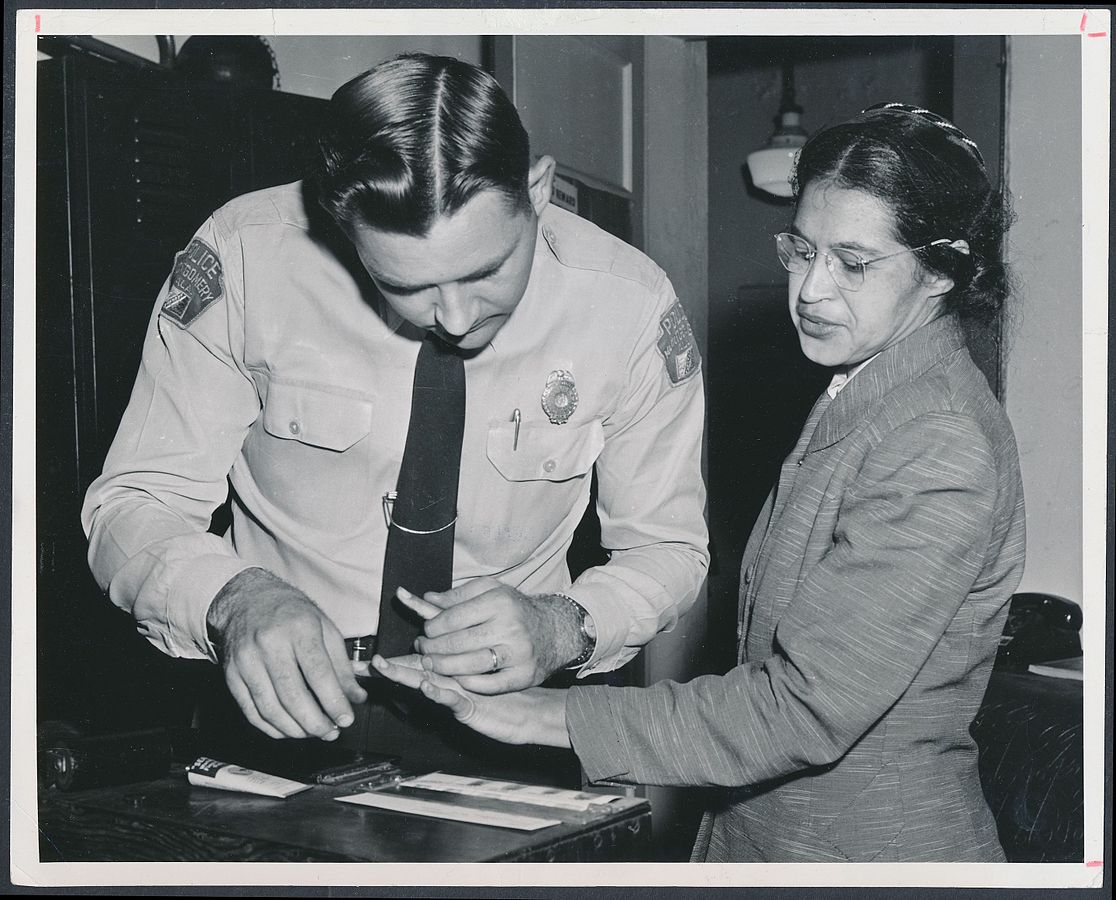
I would rather be lynched than live to be mistreated and not be allowed to say ‘I don’t like it.’”
On December 1, 1955, Rosa Parks refused to give her seat to a white man on a segregated bus. This refusal led to her arrest and sparked the Montgomery Bus Boycott. In 1956 the Supreme Court banned segregation on public transportation. Parks also worked with the Voters League to prepare blacks to register to vote. She is known as the “mother of the civil rights movement.”
-
1962 13/21
Rachel Carson reveals a horrifying truth
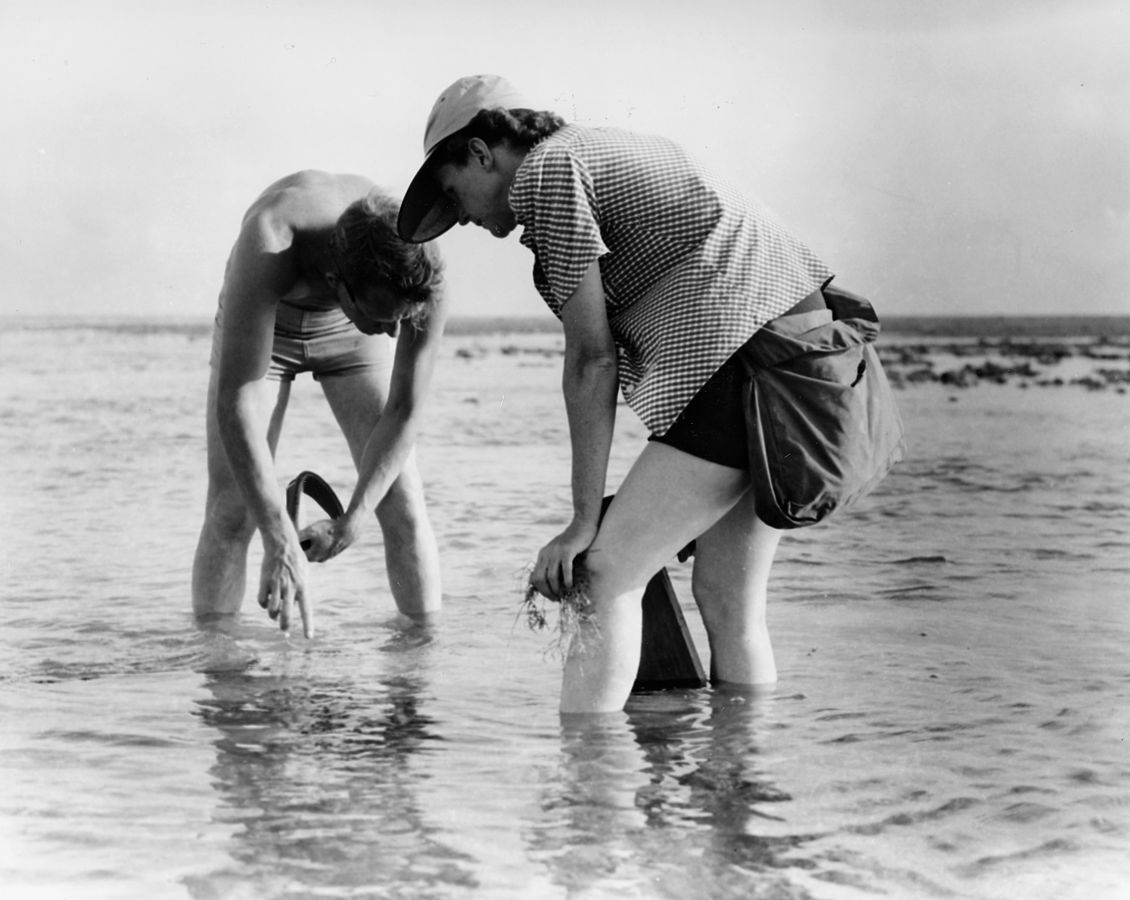
No witchcraft, no enemy action had silenced the rebirth of new life in this stricken world. The people had done it themselves.”
In 1936, Rachel Carson was appointed a junior aquatic biologist with the Bureau of Fisheries, one of only two women employed there at a professional level. In 1962 she published Silent Spring, which documented the harmful effects of pesticides, particularly DDT, on the environment and wildlife. The pesticide industry launched a smear campaign to discredit her, but her work convinced Congress to order a review of its pesticide policy and, following her testimony before a Congressional committee, DDT was banned.
-
1955-present 14/21
Dolores Huerta works for farm workers
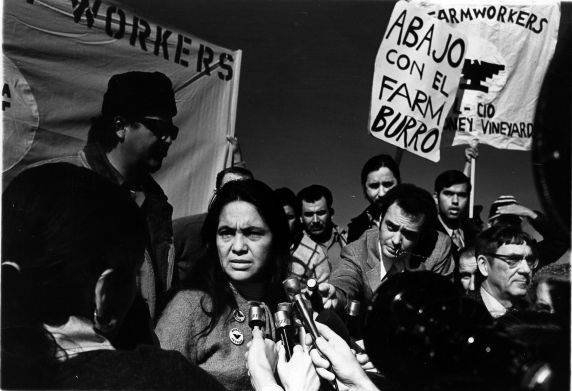
I couldn't tolerate seeing kids come to class hungry and needing shoes. I thought I could do more by organizing farm workers than by trying to teach their hungry children.”
While serving in the leadership of California's Stockton Community Service Organization (CSO), Dolores Huerta founded the Agricultural Workers Association, set up voter registration drives, and pressed local governments for barrio improvements. In 1955 she met CSO Executive Director César E. Chávez; their common vision of organizing farm workers was not in line with the CSO’s mission, so they resigned and launched the National Farm Workers Association. Her lobbying and negotiating talents resulted in securing Aid For Dependent Families (“AFDC”) and disability insurance for farm workers in the State of California in 1963, an unparalleled feat of the times. She was also instrumental in the Agricultural Labor Relations Act of 1975, the first law of its kind in the United States, granting farm workers in California the right to collectively organize and bargain for better wages and working conditions. Today, Dolores Huerta continues to work tirelessly developing leaders and advocating for the working poor, women, and children. In 2012 President Obama awarded Huerta with The Presidential Medal of Freedom.
-
1964-1990 15/21
Nelson Mandela orchestrates an end to Apartheid from prison
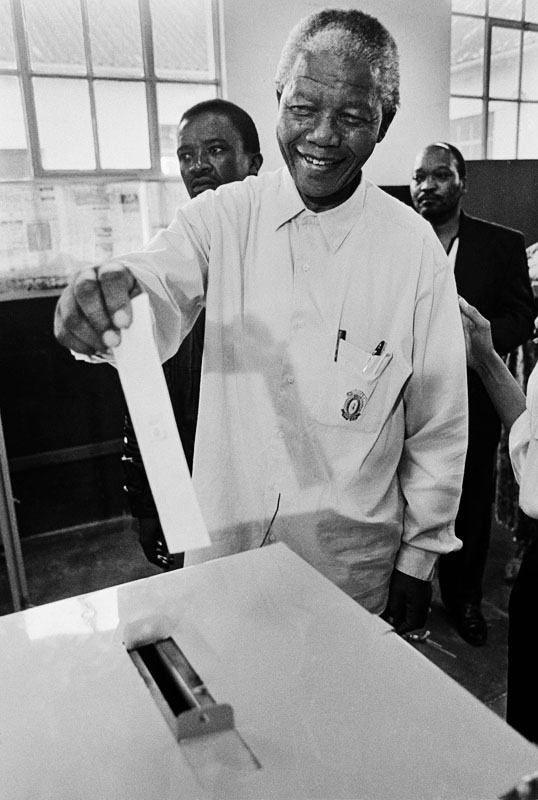
Lead from the back—and let others believe they are in front.”
Nelson Mandela was imprisoned from 1964-1990 for his leadership role in efforts to end Apartheid in South Africa. While in prison he shaped and guided the anti-Apartheid movement, reaching across political and philosophical lines to shape the future of South Africa. He continually refused to change or compromise his political views in exchange for reducing his sentence. He was released in 1990 after the ban on the African National Congress (ANC) was lifted. In 1991, he was elected President of the ANC and helped to finally bring about the end of Apartheid. In 1993, he received the Nobel Peace Prize, and in 1994 he was inaugurated as South Africa's first democratically elected president.
-
1970s-2009 16/21
Türkan Saylan works for a healthy, equal, secular world
Academic and activist Türkan Saylan created the Turkish Leprosy Relief Association in the 1970s. In 1989 she helped found the Association to Support Contemporary Life, which focused primarily on the education of young girls. She was a secularist and women’s rights activist who fought for sexual equality. She was put on a watch list under suspicion of conspiring against the Islamist Justice and Development government; her house was raided, and documents taken, just weeks before her death from cancer in 2009.
-
1972 17/21
Mark Felt blows the lid off the Watergate cover-up
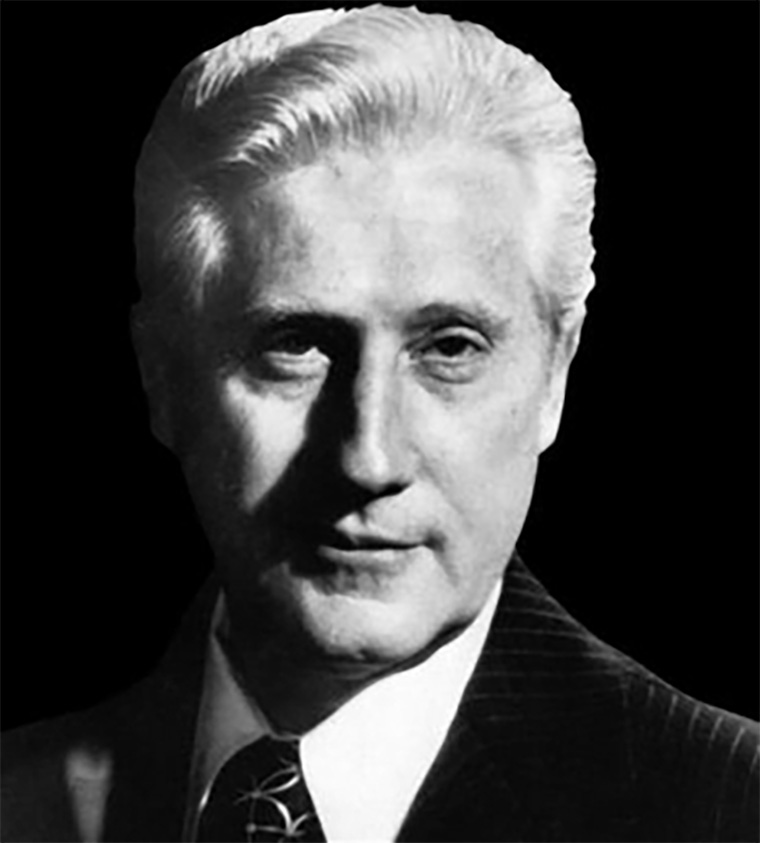
Felt was second-ranking FBI official when he became the whistleblower known as “Deep Throat” in the Watergate scandal. He provided crucial insider info to The Washington Post in an act of resistance to the cover-up by President Nixon and his advisors. Facing impeachment, Nixon ultimately resigned. Felt’s identity was kept secret until 2005, when he went public with the information.
-
1987-2012 18/21
ACT UP refuses to let AIDS be ignored

The condition is medical. The solution is political.”
The AIDS Coalition to Unleash Power was established in 1987 to organize political action in response to the AIDS crisis. The group's activities have included a march on Wall St. to demand affordable HIV medication; protesting the FDA, NIH, and CDC to push for changes in policy; protests and pressure on numerous political leaders; and protesting the Catholic Church for its stance against sexual education, contraception, homosexuality, abortion, and AIDS.
-
1989 19/21
Tank Man
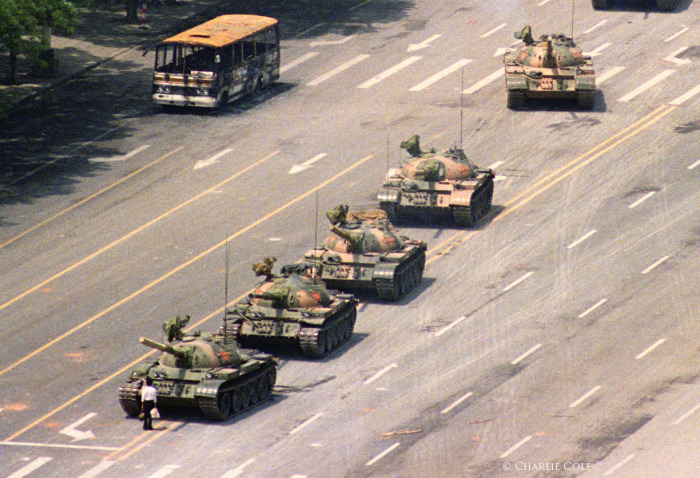
We can't find him…. We have checked through computers but can't find him among the dead or among those in prison.”
An unidentified man who carried out an act of nonviolent blockade, using his own body to obstruct the path of a tank in Tiananmen Square on June 5, 1989, the day after the Chinese government's violent crackdown of protests. He brought the column of tanks to a standstill before being removed by two unknown figures. Nobody knows who he was or what happened to him.
-
2008 20/21
Shabana defies the Taliban’s morality police
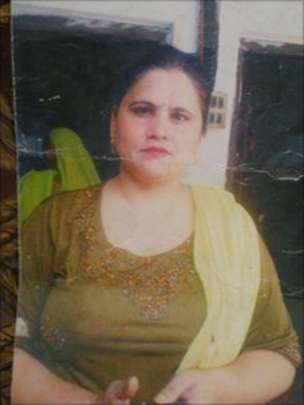
Fear is very powerful and in the end it was this fear that had made people turn against Shabana. Terror made people cruel.” —Malala Yousafzai
Shabana was a performer in Pakistan’s Swat valley when the Taliban captured the region in 2005. The Taliban issued a ban on singing and dancing as immoral, but Shabana defied the ban and continued to dance at weddings and other venues. In January 2009 the Taliban raided her house, dragged her into the town square, and shot her six times, leaving her dead body for her family to find in the morning. Her death inspired an adolescent Malala Yousafzai, who lived in the same town, to defy the Taliban.
-
2011-2012 21/21
The Arab Spring turns the Middle East inside out
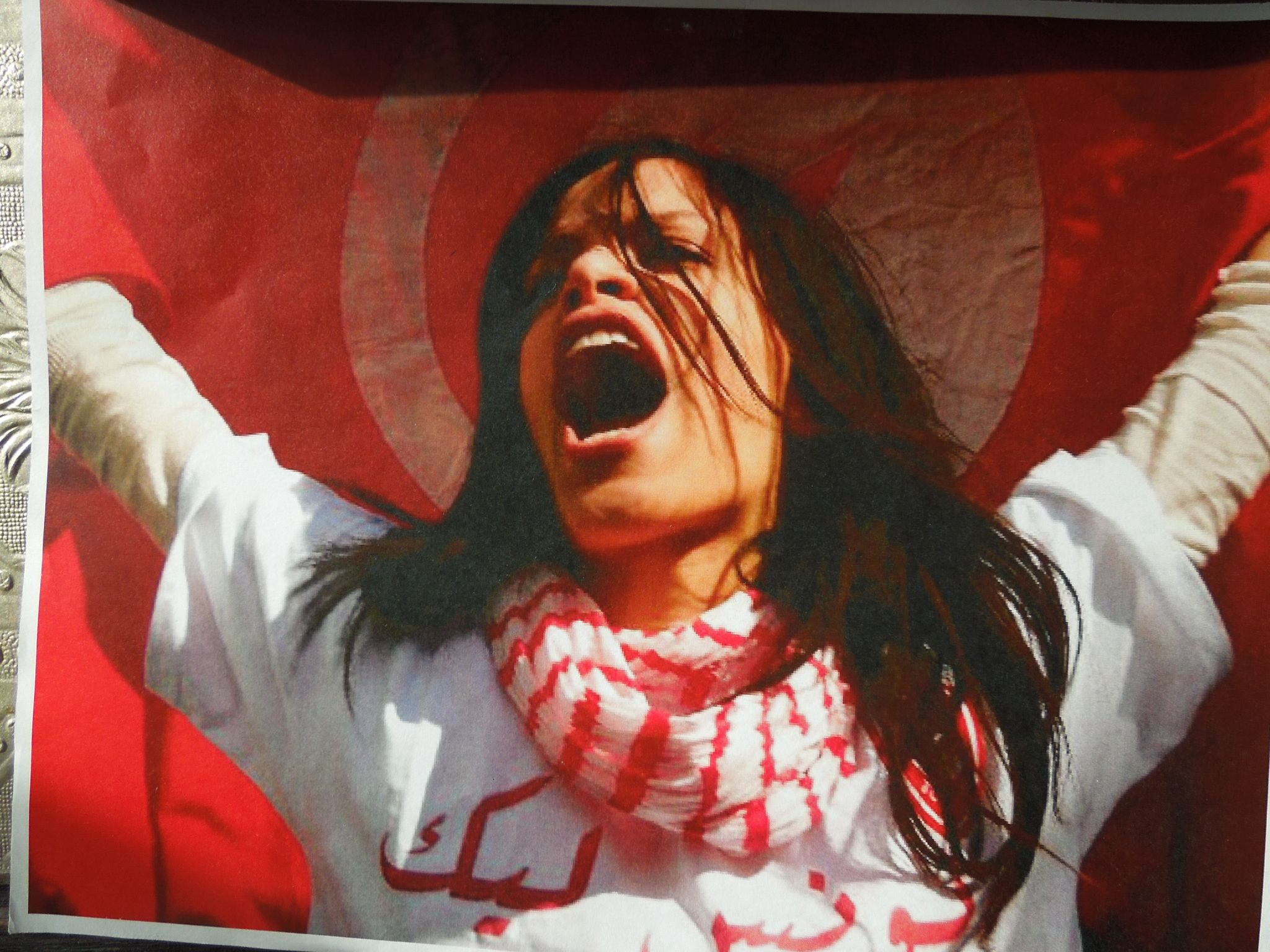
Someone had to stand up and say 'enough is enough'—and that is why I decided to take part in the revolution.” —Ahmed Raafat Amin
Beginning with 26-year-old vendor Mohamed Bouazizi's self-immolation in Tunisia and spreading to Egypt, Yemen, Bahrain, Libya, and Syria in the early months of 2011, the Arab Spring was a maelstrom of popular protest against oppressive and authoritarian rule in the region. In Tunisia, President Zine al-Abidine Ben Ali was ousted; in Egypt President Hosni Mubarak was exiled and his government overthrown; and Libya's deposed leader Muammar Gaddafi was captured and killed by revolutionaries. The broader implications and lasting changes brought about by the unrest are still very much an open question.
-
39
-
1517
-
1633
-
1733
-
1860
-
1863
-
1868
-
1914
-
1942
-
1954
-
1955
-
1955
-
1962
-
1963
-
1964
-
1970
-
1972
-
1987
-
1989
-
2008
-
2011